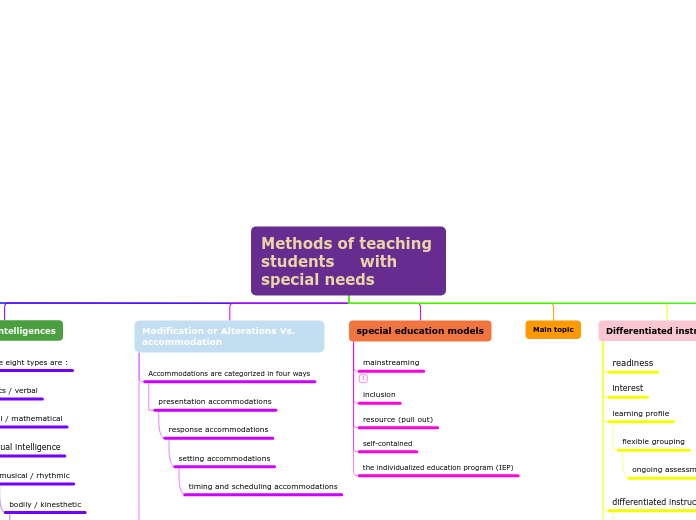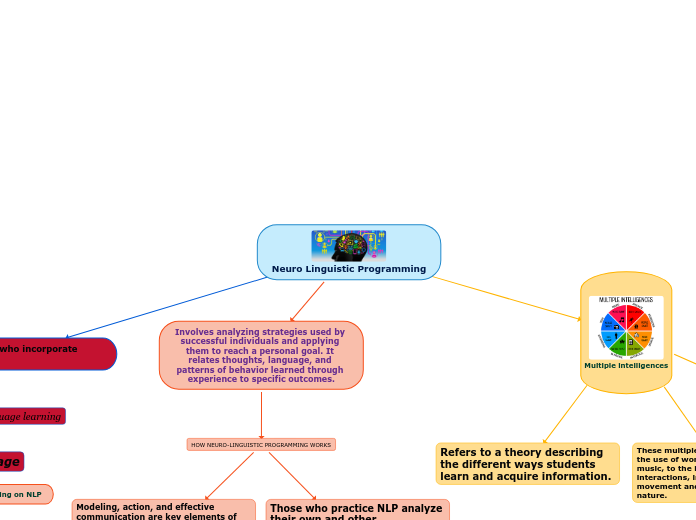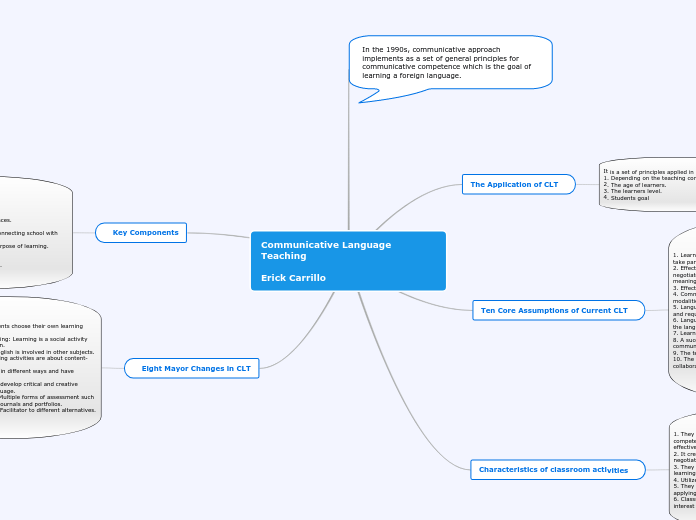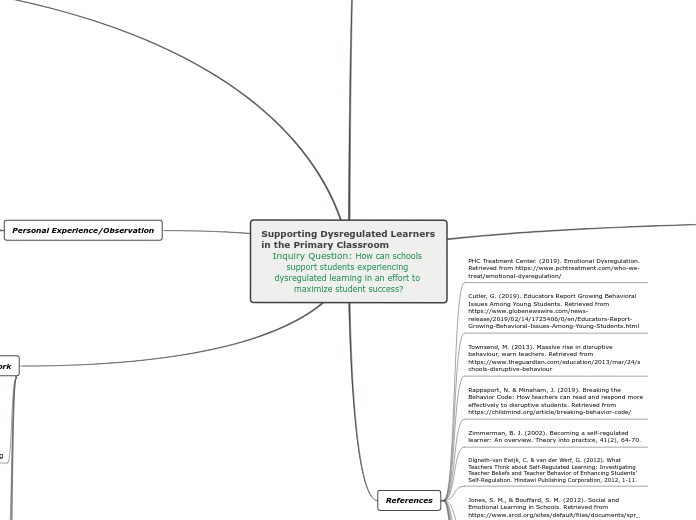Methods of teaching students with special needs
visual maps
concept map
mind maps
tinking maps
instructional grouping in the classroom
alternate procedure
six hat
white hat
red hat
black hat
yellow hat
green hat
blue hat
reciprocal teaching
think-pair-share
K-W-L Know - Want to know - Learned
K-W-L-S
K-W-H-L
Jigsaw activities
homogeneous
heterogeneous
Differentiated instruction
traditional classroom Vs. differentiated classroom
strategies for managing a differentiated classroom
differentiated instructional elements
content
process
product
the learning enviroment
learning profile
flexible grouping
ongoing assessment
interest
readiness
Main topic
special education models
the individualized education program (IEP)
self-contained
resource (pull out)
inclusion
mainstreaming
Modification or Alterations Vs. accommodation
specific examples of accommodation and modification
the physical arrangement of the room
your instruction
assessments
homework assignment
Accommodations are categorized in four ways
presentation accommodations
response accommodations
setting accommodations
timing and scheduling accommodations
multiple intelligences
naturalistic intelligence (nature smart)
intrapersonal intelligence (self smart)
interpersonal intelligence (people smart)
bodily-kinesthetic intelligence (body smart)
musical intelligence (music smart)
spatial intelligence (picture smart)
logical-mathematics intelligence
verbal-linguistic intelligence (word smart)
Intelligence eight types are :
linguistics / verbal
logical / mathematical
visual intelligence
musical / rhythmic
bodily / kinesthetic
intrapersonal
interpersonal
natural intelligence
learning styles
D: biological difference
C: desired degree of generality
extroverted vs. introverted
intuitive-random Vs. sensing-sequential
thinking Vs. feeling
closure-oriented Vs. open/perceiving
B: personality types
A: Sensory preferences
classroom diversity
exceptionalities
linguistics
socioeconomic
cultural
Subtopic









